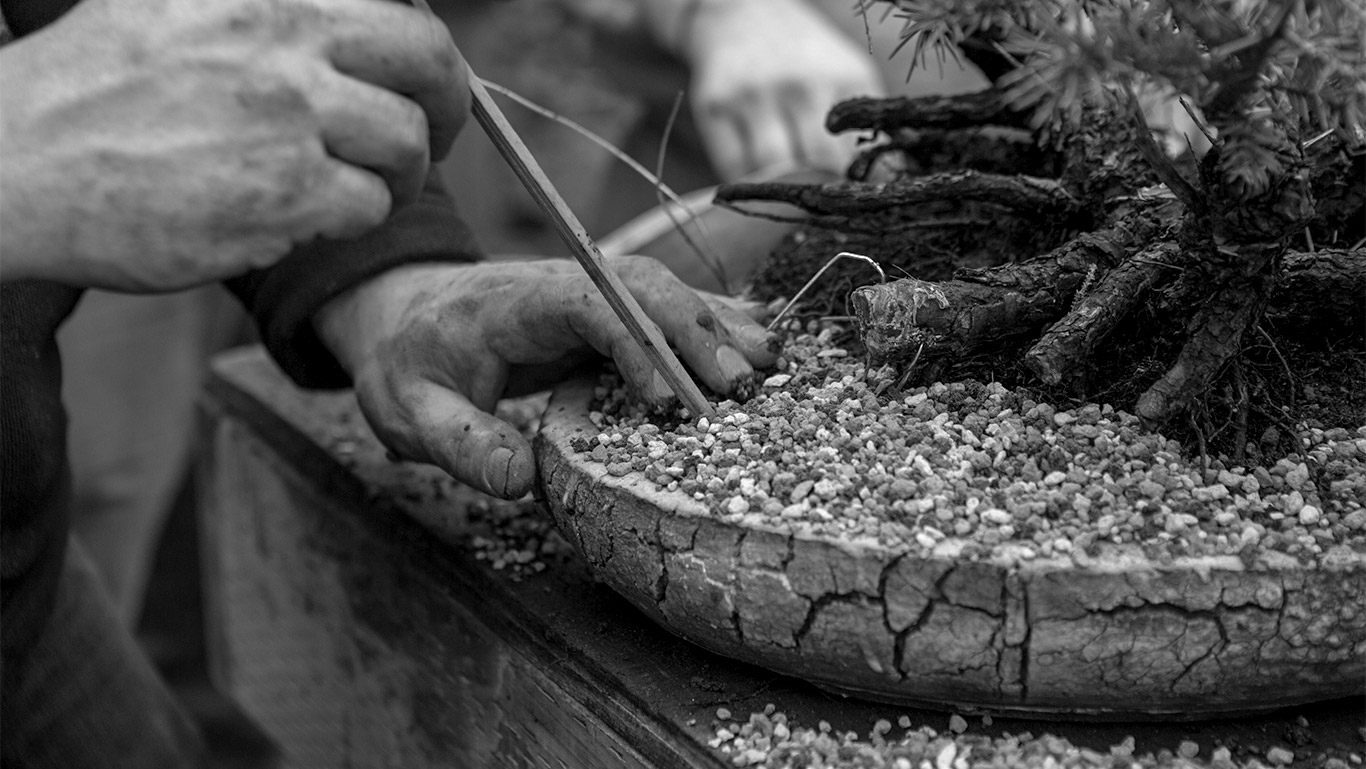5 things you must know
Repotting a bonsai is like open-heart surgery for the tree. At Mirai, we have spent countless seasons repotting conifers of various circumstances. With in all of our years testing, this is what we've learned.

#1 Never bare-root a tree.
Conifers rely heavily on their relationship with the mycelium and microbes in the container. In bonsai, we commonly refer to that relationship as mycorrhiza. Mychorriza is a fungal network growing in the soil around the roots, forming a symbiotic relationship with the tree. Mycorrhiza feed off of the sugars and carbohydrates the plant produces via photosynthesis; in exchange they expand the surface area on the roots for moisture and nutritional uptake. With a solid mycorrhizal network, the plant can actually take in more water and more nutrition. If during repotting you strip away the native soil, you remove all of that beneficial microbiotic activity. Without this, the trees (especially conifers) can’t supply themselves with enough water and nutrition to survive in a bonsai container.
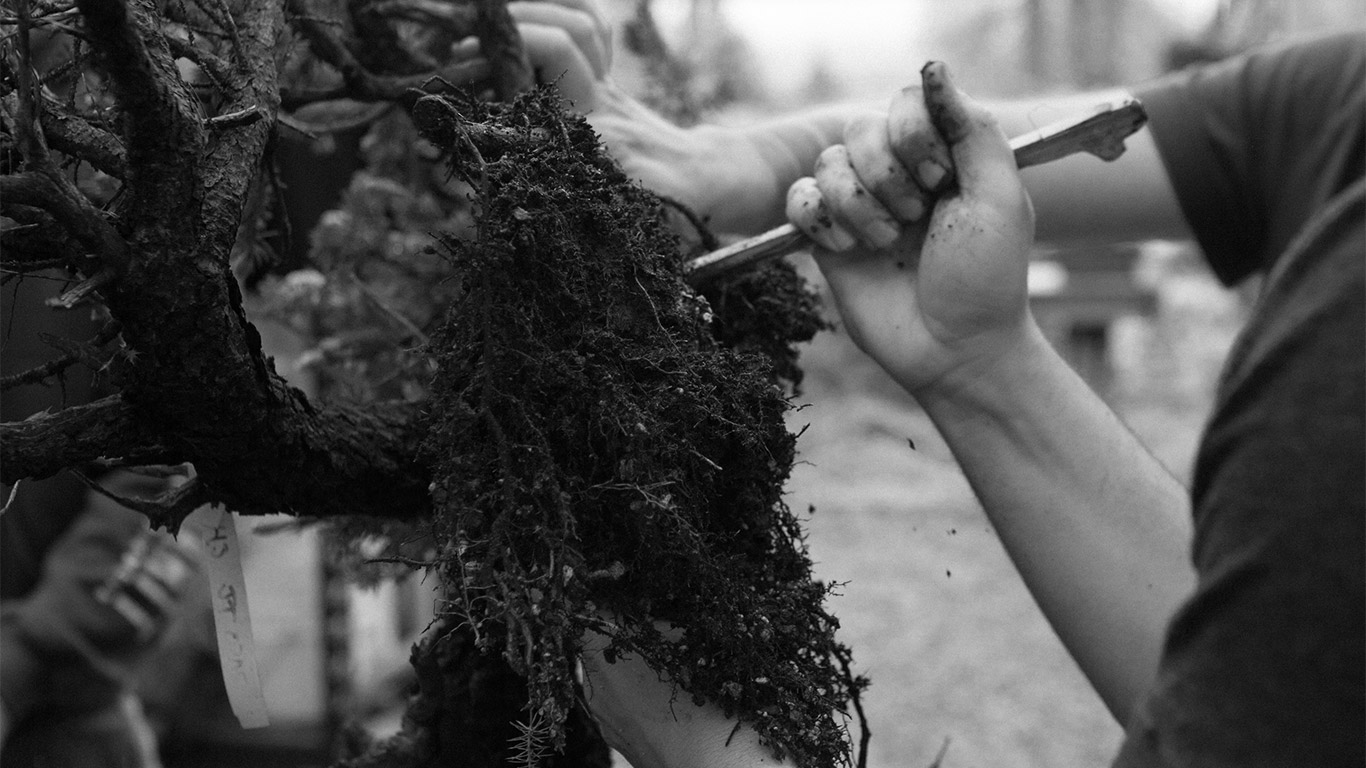
#2 Always leave some portion of the root system untouched.
The whole goal of bonsai is to reduce the proportion and rate at which a tree grows. You want to cultivate a highly refined canopy, with shorter internodes between foliage, finer twigs, and smaller needles. This gives the tree a ‘massive in miniature’ feel. The extent of refinement in the canopy is a direct reflection of the refinement in the root system. If you tamper with and break up the refinement in the roots during repotting, it will result in an abatement of ramified foliage. To continue growing a tree with shorter needles/internodes, you must leave a portion of your root mass untouched—this preserves and encourages refinement in the canopy. If you have been seeing good ramification in your tree, then you go in an alter the root system, the tree will oftentimes revert back to it’s original growth habit—larger internodes, thick branching, long needles. This technique is especially important to develop conifers as bonsai.
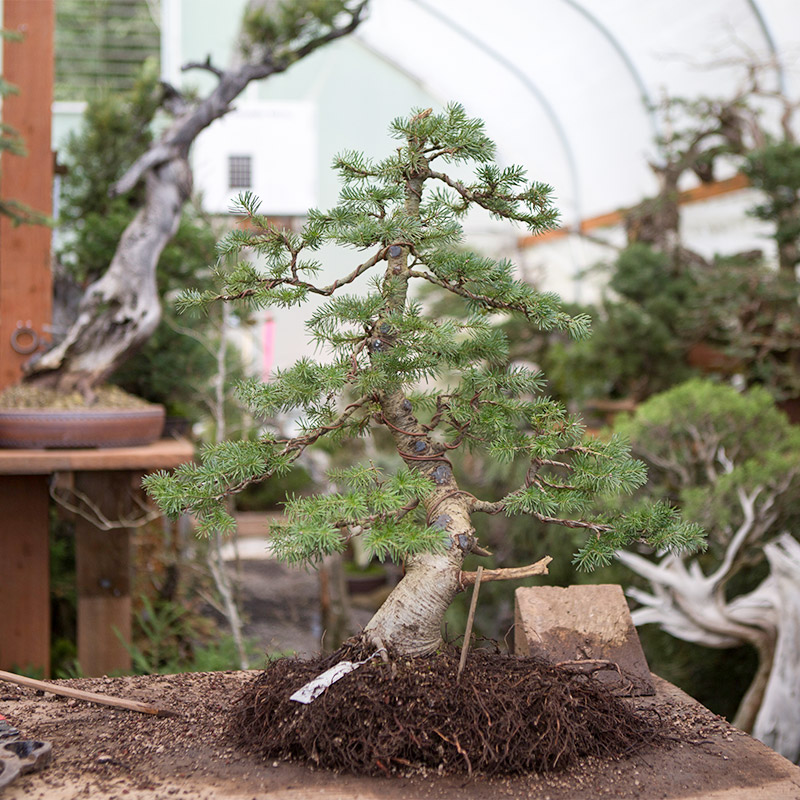
#3 Cleanly prune damaged roots.
During repotting, any roots that are broken, torn, crushed, or have a large amount of bark scraped off need to be cleanly cut. Damaged roots, if left un-pruned, tend to rot. If you cleanly cut the site, you will encourage new rootlets to grow, enhancing the health and development of the tree.
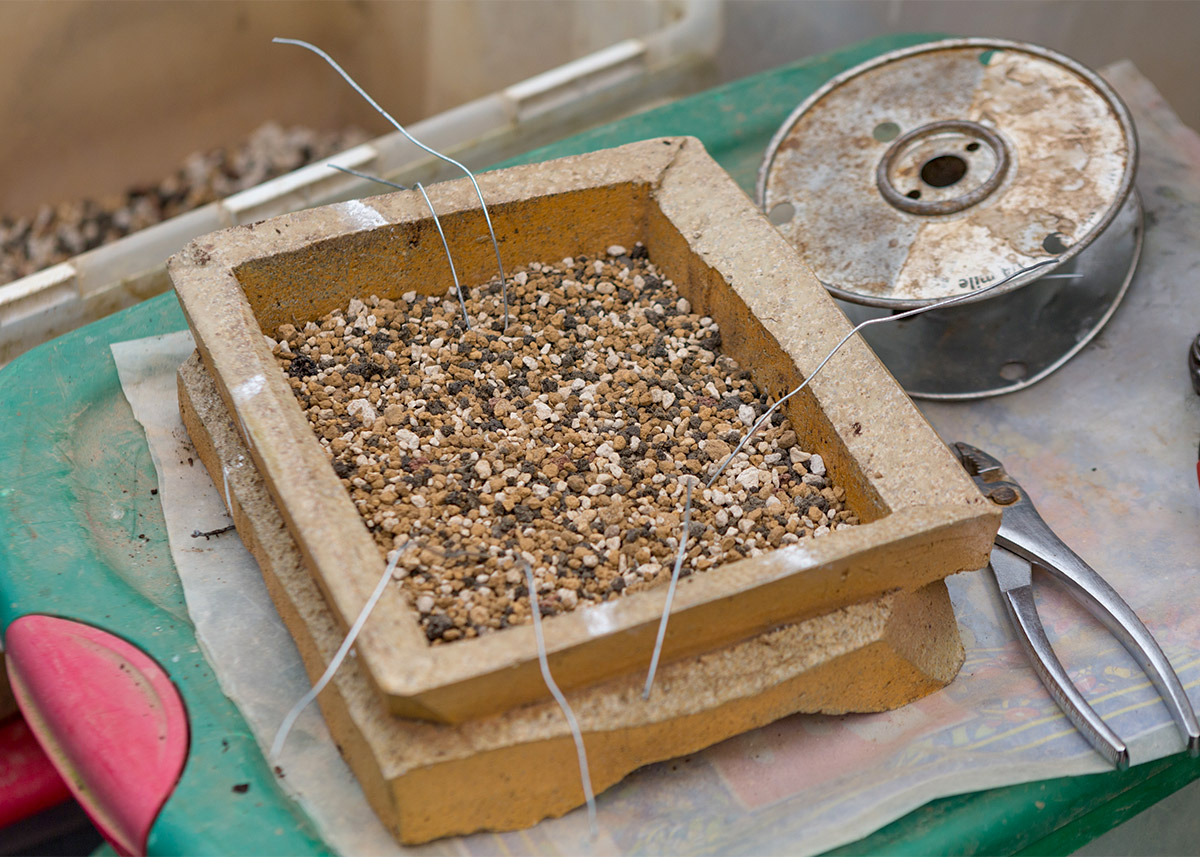
#4 Consider species-specific needs when choosing your soil.
Each species has differing needs for moisture and nutrition. With the species that truly depend on a higher availability of water and nutrition to survive, you should alter your soil composition to meet this. For example, standard juniper/pine mix is 1 part akedama: 1 part lava: 1 part pumice. When you are dealing with spruce, hemlock, or fir, you need to increase the quantity of akedama because they need more nutrition and moisture retention. For these trees, 2-3 parts akedama: 1 part lava: 1 part pumice is best. The far side of this equation would be redwoods, bald cypress, and larch. These thrive well in 4 parts akedama: 1 part pumice: 1 part lava or even solid akedama. Tailor your soil to each tree’s specific needs; provide them with the best possible environment to grow.
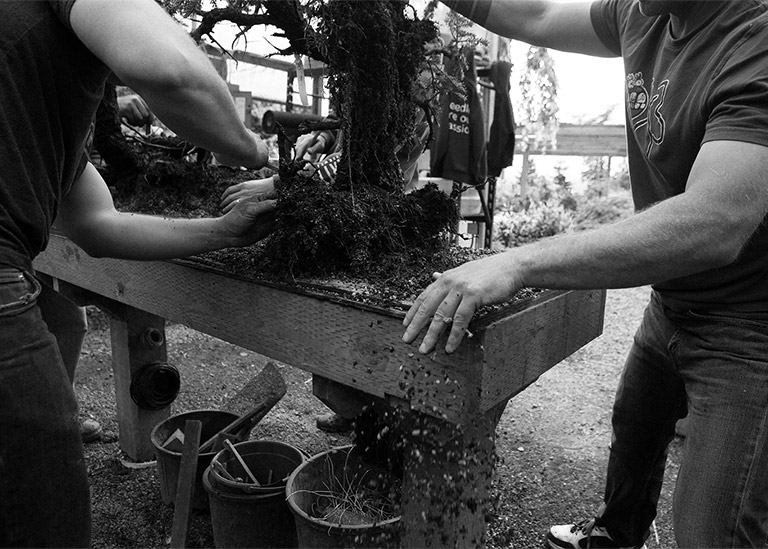
#5 Exercise impeccable technique at every turn.
Every single thing that you do during the repotting process adds to or takes away from your chance of success. There isn’t one step that is more important than the other; this awareness must be precisely executed in order to repot well. Careful extraction from the container, carefully removing the tie-down wires so they don’t damage the root system, understanding which roots to disturb, making clean cuts on all of your roots, properly using chopsticks to insert new soil so there’s good contact of roots and soil, top-dressing the tree to facilitate root growth throughout the entire container, watering out all of the fine, broken-down particles after the repot, exercising and offering appropriate aftercare—all these elements maximize the tree’s ability to recover. Take your time, prepare your space with all of your tools and materials. Don't repot on the fly.
